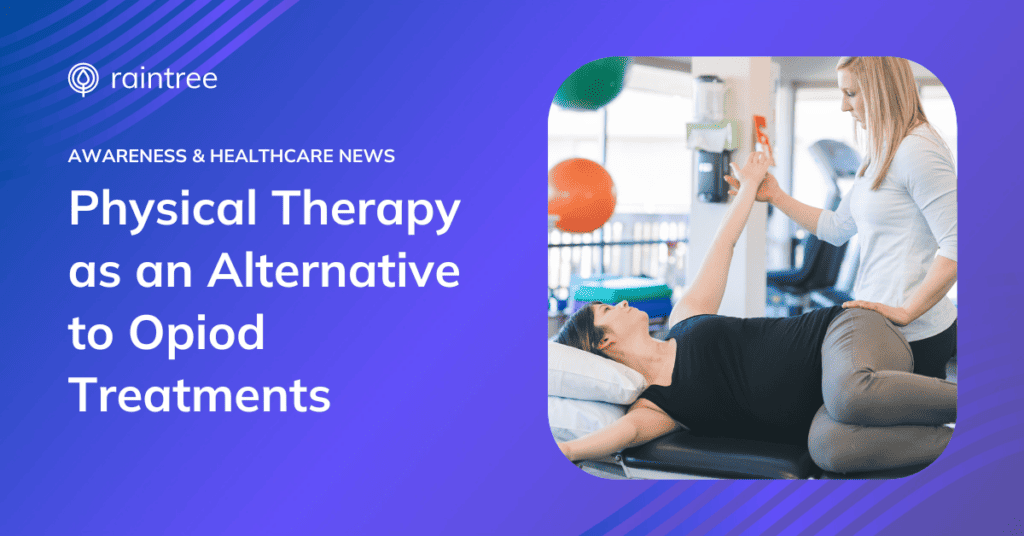The Center for Disease Control and Prevention (CDC) estimated that chronic pain affects nearly 50 million American adults, with about half reporting persistent daily pain lasting for more than three months. To make matters even worse, some people with chronic pain have resorted to prescription pills, which contributes to the increased misuse of opioids and other drugs.
With the current opioid crisis causing increased morbidity and mortality, it’s no surprise that health providers are exploring non-pharmacological treatments such as physical therapy as an alternative to opioids. That’s why understanding what chronic pain is, its role in the opioid crisis, and why physical therapy could be the ideal alternative treatment option to opioids is essential for healthcare providers and patients alike.
Chronic Pain
The National Institute of Health defines chronic pain as any pain that persists for three to six months. What’s more, chronic pain is more common among the elderly and can be caused by many health issues, including chronic conditions such as diabetes and arthritis. Chronic pain may also be a result of conditions such as:
- Autoimmune disorders
- Traumatic injuries
- Fibromyalgia
- Reflex sympathetic dystrophy
- Limb amputation
- Cancer
Chronic pain affects each patient differently. However, some common effects include depression, difficulty with sleep, and anxiety that can lead to job loss or limitations in daily activities. If left untreated, chronic pain can extensively diminish a person’s quality of life.
Opioids and Pain Management
Pain remains one of the oldest challenges that medical, religious, and social science communities face, leading to the widespread adoption of prescription opioids as a standard treatment for chronic pain. Although opioids have been in the headlines recently, they aren’t new—their use in pain management dates back to treating war injuries in the 18th century.
The discovery of opioid receptors and endogenous endorphins as well as advancements in pain physiology in the 20th century further showed that synthetic opioids could be used to reduce pain. This led to the Food and Drug Administration’s (FDA) approval of opioid prescription drugs and as a result, the beginning of the current opioid crisis.
With the FDA approving opioids without complete safeguards in place in addition to pharmaceutical companies reassuring the medical community of opioid use safety in the 1990s, it’s no surprise that misuse and addiction ultimately became a widespread problem.
Fortunately, the U.S. Department of Health and Human Service’s (HHS) 5-Point Strategy To Combat the Opioid Crisis has helped healthcare providers better understand chronic pain and its appropriate management. For instance, it has become evident that prescription drugs such as opioids are only effective in dealing with acute/severe pain. Also, the medical community is now aware that the use of opioids for the long-term management of chronic pain can result in addiction, a precursor to overdose deaths.
Additionally, COVID has helped showcase the threat of opioid use even further. With economic shock, mental distress, and self-isolation disrupting emotional health for many, the pandemic created the conditions that increased drug dependence—with opioid overdose contributing to many of these deaths.
Physical Therapy as an Alternative to Opioids
As highlighted by the HHS 5-Point Strategy, managing chronic pain requires a comprehensive approach that is safe and patient-centered. Physical therapy (PT) ticks all of the boxes and is more of a cost-effective treatment that targets the underlying condition instead of just blocking pain receptors. Physical therapy also helps deal with the source of chronic pain in the following ways:
- Strengthening exercises. These exercises increase the physical strength of muscle and soft tissue. The additional strength offers support for joints whose nerves are susceptible to pressure – a common cause of chronic pain. A physical therapist can develop personalized support and plans of care to help patients regain muscle strength.
- Manual therapy/physical manipulation. Physical therapy aims to increase the body’s mobility and flexibility. When the body experiences pain, it reacts by limiting movement in those parts, resulting in abnormal movement patterns and wear and tear in other areas. PT is what helps restore normal body movement by gently relaxing those affected parts.
- Posture awareness. Physical therapy teaches patients how their bodies optimally work and helps them learn healthy movement habits during normal activities such as sitting, walking, bending over, or lifting objects.
- Temperature and E-stim Therapy. Therapy involving electrical stimulation or hot and cold treatment has been widely used to deal with chronic pain resulting from inflammation.
With overwhelming research proving the efficacy of physical therapy in the management of chronic pain, it’s essential to start advocating for alternative treatment methods to opioids. In fact, physical therapy is the most recommended non-pharmacologic option for pain management, especially in cancer patients receiving palliative care. What’s more, research shows it could even be a viable alternative to surgery in lumbar spinal stenosis patients.
Raintree Stands With APTQI
With the opioid crisis leaving us with more deaths, there is a need to guide the medical community away from prescribing opioids to manage chronic pain. As a proven method that treats the underlying cause of pain rather than just masking the symptoms, physical therapy should be widely adopted as an alternative treatment.
Here at Raintree Systems, we stand with The Alliance for Physical Therapy Quality and Innovation (APTQI) as they spearhead spreading awareness for physical therapy in the fight against the opioid crisis in addition to advocating for value-driven patient care. On the other hand, we do our part by providing therapists with innovative technology that enables them to deliver quality and efficient care to their patients while also promoting the critical importance of all therapy and rehab specialties, including physical therapy, occupational therapy, speech therapy, as well as applied behavioral analysis (ABA).


